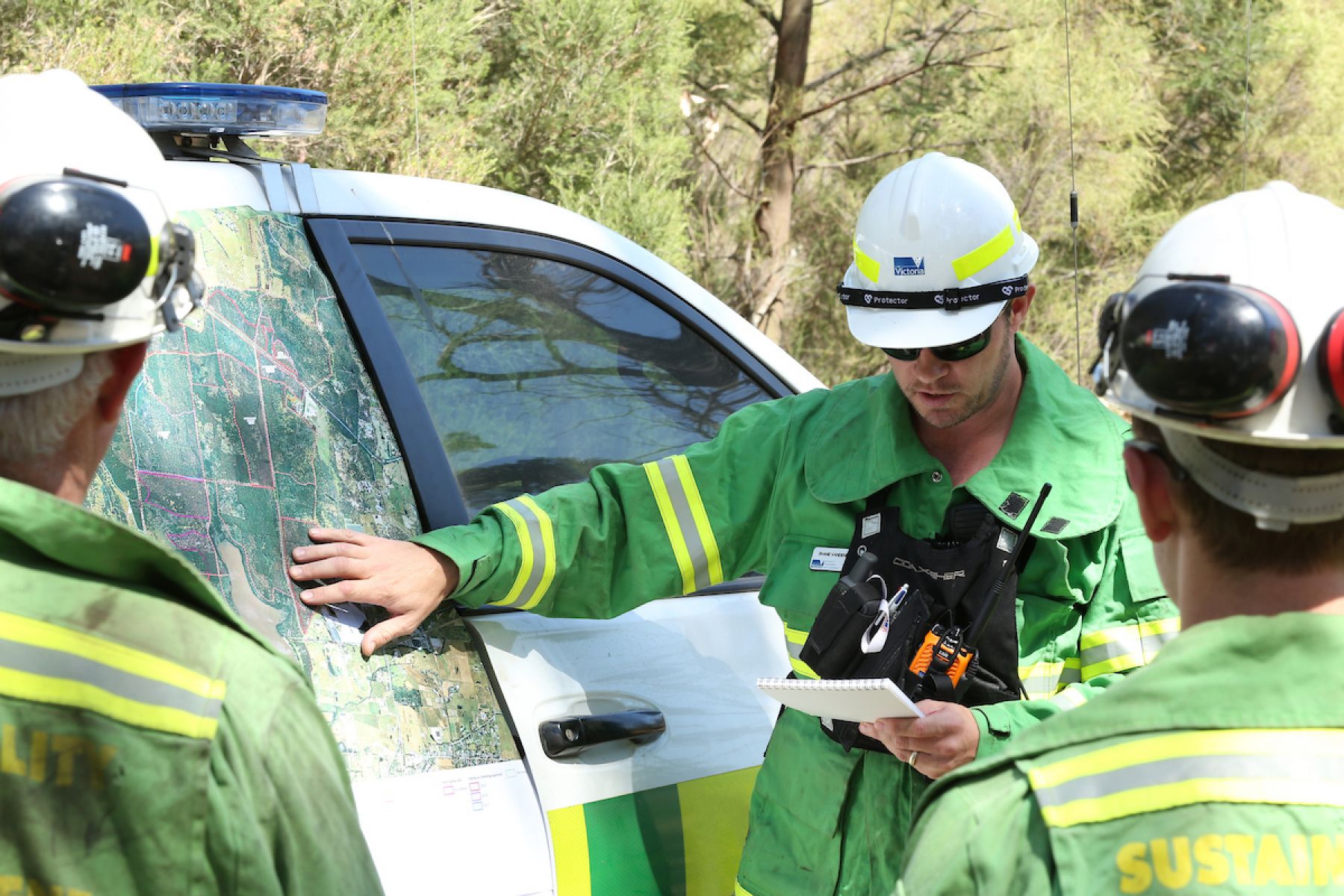On this page:
Before visiting a state forest, it’s important to know about some of the potential hazards you may face and how you can stay safe. This includes hazards like:
- bushfires
- extreme weather
- road or site closures.
To help you have a safe and enjoyable visit, we’ve put together some key information.
Bushfires
Victoria is one of the most bushfire-prone areas in the world, particularly between November and March when it’s generally warmer.
Reduce your risk of being impacted by bushfire:
- plan ahead and monitor the weather forecast and warnings from the Bureau of Meteorology.
- avoid state forests on a day of an Extreme fire danger rating. All state forests will be closed in districts where a Catastrophic fire danger rating day has been declared.
- visit VicEmergency or download the app for information about current fires, Total Fire Bans and to receive real-time emergency updates.
Storm and high wind events
It’s best to avoid being in forests during storm and high wind events due to the rare but potentially catastrophic risk of falling trees.
While statistically, death from limb and tree fall is incredibly low it is more likely during high wind and storm events.
You can reduce your risk by:
- planning ahead and monitoring the weather forecast and warnings from the Bureau of Meteorology
- get out from under canopy and seek open areas if caught in the forest during storm and high wind events. Remember, trees can be uprooted in high winds so try and get at least one tree length away from surrounding trees.
Planned burns
Managing bushfire risk is an ongoing responsibility all year round. When weather and forest conditions are suitable, Forest Fire Management Victoria carry out planned burns to reduce the potential size, intensity and impact of future bushfires on the community and environment.
When burns are underway, you may see or smell smoke or come across heavy machinery and other operational equipment and staff in some areas.
Check when and where planned burns are happening so these don’t impact your visit.

Seasonal road closures
Many roads and tracks in Victoria’s state forests and parks are closed between June and November to protect the environment, as well as the safety of visitors.
Before you travel, check which roads are closed and the recreation sites impacted on the More to Explore app or the FFMVic website.
Campfires and BBQ safety
Campfires are allowed in state forests except on Total Fire Ban days. Consider whether you need a campfire and always follow our rules for campfire, stoves and BBQ safety. Don’t light a campfire on hot and windy days.
The rules applying to the use of campfires and BBQs in Victoria are actively enforced and significant penalties apply for non-compliance, including heavy penalties on Total Fire Ban days.
Bushfires are a very real threat in Victoria and can result in loss of life and property. Never leave a campfire unattended and make sure it’s fully extinguished before you leave, remember – if it’s cool to touch, it’s safe to leave.
Learn more about campfire safety:

Choose recreation sites suited to your abilities
All tracks and trails are graded to help you choose one suited to your skills and abilities. Campgrounds which feature on this website are also rated as family-friendly, intermediate (for those with some experience) and advanced (for very experienced campers) to help you get prepared.
Find out more about what you can expect at our sites.
Page last updated: 01/04/25
